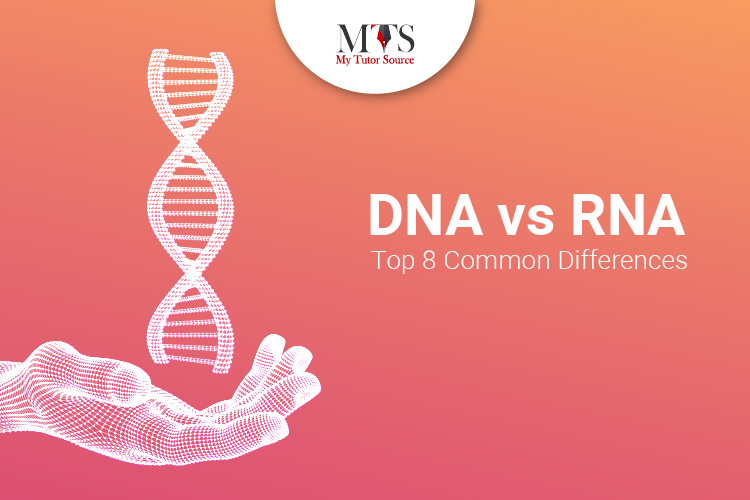

Have you wondered what is the chemical difference between DNA and RNA or what sets ribose sugar DNA or RNA apart from each other? We have got the answers to all your questions right here! Keep reading to find out interesting things about RNA vs DNA:
DNA is formed by nucleotides that are made up of a sugar group, nitrogen base, and phosphate group. The nitrogen bases include the following:
The nucleotides that make up the structure of DNA are bound to create 2 two long strands that create a double helix. The sugar and phosphate groups are present on the sides of the helix and the bases are present on the strands.
RNA is formed by ribose nucleotides that are attached via phosphodiester bonds and create strands of different lengths. In other words, RNA is a complex compound with a high molecular weight. It plays an important role in the synthesis of protein and, in some viruses, it replaces the DNA as the carrier of genetic codes. The nitrogenous bases present in RNA include the following:
Uracil is the base that replaces Thymine which is present in DNA.
RNA has a chemically reactive hydroxyl (−OH) group which is bound to the second carbon group. This settlement of molecules makes it more prone to hydrolysis. This is also the reason why DNA which does not contain chemically reactive hydroxyl (−OH) group, is thought to have evolved as the preferred option to carry important genetic information across most organisms.
Both RNA and DNA serve the same function i.e., store genetic information, they are quite different from one another. Let’s take a look and compare the structure of DNA and RNA:
| Sr. No | Characteristics | DNA | RNA |
| 1 | Full Form | Deoxyribonucleic Acid | Ribonucleic Acid |
| 2 | What is the function? | DNA is a blueprint for all genetic information in an organism and it replicates and stores that information. | RNA actually transforms the genetic information that is stored in DNA to a format that is used in building proteins. It then proceeds to ribosomal protein factories. |
| 3 | What is the length? | DNA is longer than RNA in length. For instance, a chromosome can be quite long when unravelled going up to several centimetres. | RNA can vary in length, however, it is considerably shorter than DNA. Surprisingly, a large molecule of RNA can be only a few thousand base pairs in length. |
| 4 | What are the sugars? | DNA has the deoxyribose sugar and has one less hydroxyl group as compared to RNA’s ribose. | RNA has ribose sugar molecules but they do not have the hydroxyl modifications that deoxyribose has. |
| 5 | What are the bases? | DNA contains Cytosine (‘C’), Adenine (‘A’), Guanine (‘G’), and Thymine (‘T’). | RNA Uracil (‘U’), Adenine (‘A’), Cytosine (‘C’), and Guanine (‘G’). |
| 6 | What is the base pairing? | DNA has Adenine & Thymine pair (A-T) and Cytosine & Guanine pair (C-G). | RNA has Adenine & Uracil pair (A-U) and Cytosine & Guanine pair (C-G). |
| 7 | What is their Ultraviolet (UV) Sensitivity? | Deoxyribonucleic acid is susceptible to damages caused by ultraviolet light. | Ribonucleic acid is a lot more resistant to damages caused by UV light as compared to DNA. |
| 8 | Where are they found? | DNA is present in the nucleus of the cell along with a tiny amount of DNA also present in mitochondria of the cell. | The Ribonucleic Acid is created in the nucleolus, and then it goes to specialised regions of the cytoplasm based on the kind of RNA formed. |
Let’s sum all of it up in short sentences now:
So, can you now differentiate between RNA vs DNA?